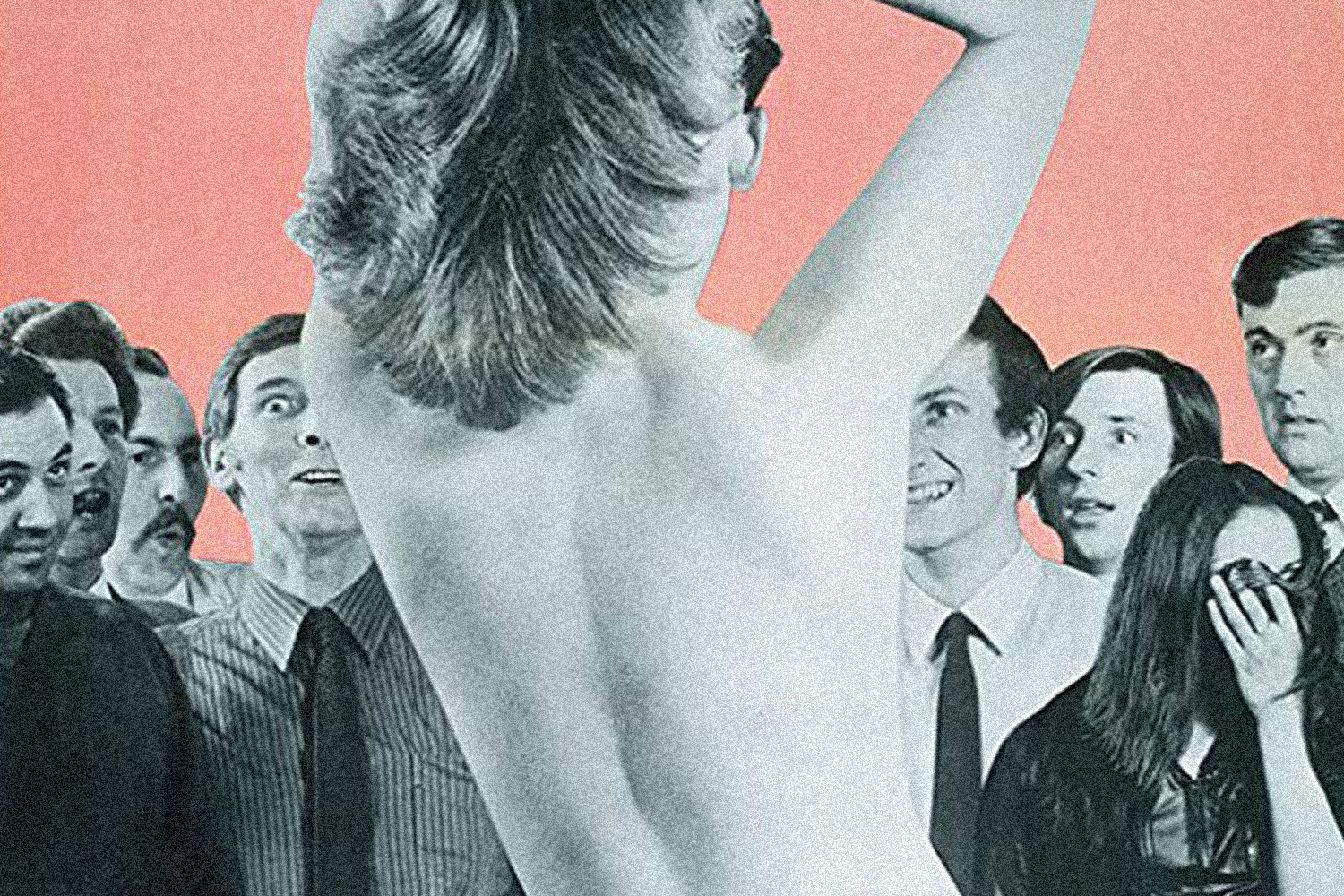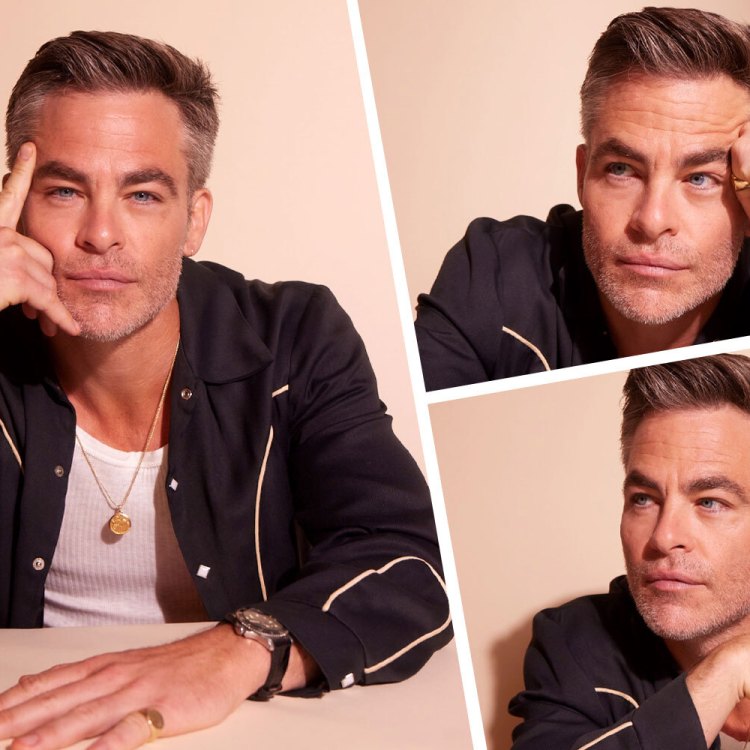Though her life wound down in relative obscurity, dusting the dildos and minding the shop at the Pink Pussycat Boutique in Florida’s Coconut Grove, Doris Wishman got the last laugh.
This week marks 60 years since her genre-defining “nudie-cutie” skin flick Nude on the Moon first came to theaters and got summarily banned by the state of New York. In 1961, the legal rationale went that while nudist camp films could be excused as educational, since they depicted real-world cultures, her fantasy of breast-baring “Moonatics” in outer orbit had no such merit. Opposition like this wasn’t out of the ordinary for her. She spent her long, prolific career in filmmaking — she directed or produced at least 30 features over the course of four decades, more than any woman before or since — raging against systems and mores she would live to see crumble.
Vindication would come to her in waves, the last few posthumous. Shortly after the release of Nude on the Moon, cinemas began to allow much franker content to play for interested ticket-buyers, and her own output kept pace with the times. The sci-fi sendup in question would amass a cult fanbase in the decades after its controversial release, one such devotee being the experimental artist Peggy Ahwesh, who tracked Wishman down for a 1995 zine commemorating her and her body of work. Ahwesh distributed the original 75-copy run during showings at San Francisco’s Roxie Cinema, ground zero for the reappraisal and reclamation of a corpus dismissed by blinkered cinephiles as exceptionally lively trash. Wishman passed away in 2002, declaring with her characteristic defiant wit that “when I die, I’ll make films in Hell,” and yet her profile continued to grow.
A reissue of Ahwesh’s zine in 2019 occasioned retrospective screenings at chic arthouses like New York’s Metrograph and such high-minded institutions as the Museum of Modern Art and London’s Institute for Contemporary Arts. The halls of academic legitimacy have welcomed the sort of fare once frequented by people in coats, and still, none of its ragged edge has been dulled. Today, Wishman is increasingly recognized for what she always has been: not just a pioneering pervert and empress of filth, but also an artist of uncommon curiosity and empathy, making desirous films untarnished by the default lechery on which many of her male peers prided themselves. An influence to John Waters and South Park creators Trey Parker and Matt Stone, she blazed a path for disreputable horndogs everywhere, and suggested a compassionate inquisitiveness behind their lolling tongues.

A New York-bred Jew with the kind of smart mouth unique to people fitting that description, she was taken with showbiz from her earliest adulthood. She involved herself however she could, from acting courses with classmate Shelley Winters (like much of what born huckster Wishman said of herself, this detail comes with a grain of salt) to bit parts onscreen to assisting her film distributor cousin as a booker. When her husband died of a heart attack after five short months of wedded bliss in 1958, she found herself a relatively young widow with a lot of free time and some money to her name. “I needed something to fill my hours with,” she told the L.A. Times. She’d spent enough time around the periphery of the industry, and the time had come to get her hands a little dirty.
Her experience in booking had taught her the one golden rule in a business seemingly ungoverned by reason: people can, without fail, be relied on to pay for the privilege of seeing other people naked. The titles flouting the censors sold big without exception, and so Wishman formulated a plan to capitalize on a 1957 ruling that loosened restrictions to allow for nudist cultures to be depicted in a culturally enriching capacity. She purported to have borrowed $10,000 from her sister to put together Hideout in the Sun, a directorial debut credited to cameraman Larry “Lazarus” Wolk while Wishman was listed as producer only. She would occasionally minimize her female presence to make headway in the boys’-clubbiest subsection of what was already one giant boys’ club, going by “Anthony Brooks” for Nude on the Moon and borrowing her second husband Louis Silverman’s name for a handful of selections at the tail end of the ‘60s. Formally, however, a sharp-eyed viewer could tell that her output originated from a creative vantage shared by no one else.
For starters, Wishman’s early nudist pictures were as tame as could be. Even with the relative permissiveness of the laws at the time, she still couldn’t show frontal nudity, and so the most private bits are obscured either by tactfully placed scenery (a trope that has since spawned plenty of imitators) or the camera’s averted gaze — though gazing, in the consumptive academic sense, doesn’t have much purchase in this friendly world unencumbered by clothing. The expected slow-mo close-ups of jiggling mammaries are nowhere to be found, replaced instead by wide-shot cinematography captured from what feels like a respectful distance. There’s a patient, observational quality that offers an invitation to look without leering, the unstated objective being the cultivation of an appreciation rather than pure titillation. Hideout in the Sun and Diary of a Nudist studied their subjects from an anthropological disconnect, a perspective that made the more fantastical fiction of Nude on the Moon look like the discovery of a hidden, man-free utopia. Women perform ordinary tasks, go about their lives and generally exist with more naturalistic ease than most Hollywood productions would grant them. It just so happens that they’re missing their clothes while doing so.

The standout in this initial run has to be Blaze Starr Goes Nudist, in which the Baltimorean burlesque legend grows weary of her gilded cage as a celebrity and absconds to the bare-assed paradise of Sunny Palms. Chafing at the expectations heaped on her by her boyfriend/manager, she seeks happiness among the birthday-suited, a plotline that truly commits to the self-actualization of a ground-down woman in between the hip-swiveling calisthenic routines. She finds a simpatico spirit in the camp’s Charles Atlas-looking counselor, and despite her tiresome beau’s warnings that she’s throwing her career away, she gets a happy ending twice over. She takes up with her new man from the camp, and finds that the studio head heartily approves of her lifestyle change, extending her contract anyway. Wishman approached her protagonists from a place of understanding and nonjudgmental tolerance, even if they didn’t all have as good a go of things as Blaze Starr.
In search of fresh envelopes to push, Wishman transitioned to the softcore “sexploitation” cinema that would become her home by the mid-’60s, churning out “roughies” about women caught in the hazardous underbelly of carnality. In a 2019 essay on Wishman and Ahwesh for Cinema Scope, the writer Elena Gorfinkel put it best: “the alchemy of unbidden female desire mixes woozily with a punitive patriarchal logic in which women, grasping for happiness and pleasure, wander through a world whose inexplicable laws constantly shift under their snazzily stilletoed feet.” In Bad Girls Go to Hell, a Boston housewife kills her rapist in self-defense and lams it to New York City, stumbling from one frying pan into the next until she can’t tell where the fire is. Love Toy sees a nubile teen traded into sex slavery by her father to pay off his gin rummy debts, then dragged through a gamut of Freudian erotic games. In either case, the aesthetic dreaminess and actual dream sequences posit these seeming nightmares as the product of a tormented sexual imagination. Like Catherine Deneuve in Belle de Jour, these women have been so bound in a polite, smiling repression that picturing their own degradation is the only thing that still excites.
While the roughies planted characters in all manner of compromising situations, the era still marked suggestion as a line they couldn’t cross. Voiceover narration supplied Wishman with glue to hold together disparate snippets of footage from her often chaotic shoots. An inability to graphically display penetration forced Wishman to get resourceful, relying on dialogue, handheld camerawork more focused on tight close-ups of agonized expressions than private parts, and innovative editing schemes that inserted non-diegetic imagery to stand in as symbolic suggestion. A woman getting beaten with a belt, for instance, may abruptly cut to a shot of an empty bottle lying on the floor; we can intuit from it that she’s been used up and cast aside, left a hollow shell of herself. The melodrama of pity would be duly offset with a true, roiling, fiery hunger for pleasure; the lamentation wasn’t for moral wantonness, but for society’s violent refusal to accommodate it.

Wishman was sensitive — not by giving her characters the kid-glove treatment, but by deciding what sorts of people those characters could be. She made a pair of action-spoofs with the aptly named Chesty Morgan (born Liliana Wilczkowska in Poland, orphaned as a child by the Nazis, repeatedly arrested in the U.S. for allowing men to touch her gargantuan breasts during her live act to prove their authenticity), and one randy comedy with nightclub mainstay Sammy Petrillo, a future mentor to Richard Pryor. With 1968’s Too Much Too Often!, her one and only film trailing a man through an odyssey of flesh, Wishman sent a cocky gigolo (Buck Starr, no relation to Blaze) into corporate America to literally fuck things up for the capitalists in charge.
Most forward-thinking of all, she directed a semi-documentary called Let Me Die a Woman in 1978, a medical, psychological and social explication of being transgender. While some of the language may be outdated and the musical cue accompanying the reveal of every penis sounds like the Jaws theme, the film extends genuine humanity to the men and women who sit for its interview segments. With candor shocking for the time, a doctor walks us through gender confirmation surgery step by step, further legitimizing trans identity with science’s matter-of-factness. Wishman shone a spotlight on discrimination and dysphoria, and captured the hopes, humor and frustrations of a population treated like second-class citizens when acknowledged at all.
The unshy edification of Let Me Die a Woman was made possible by relaxing of content standards in the ‘70s, the same time that Wishman dabbled in hardcore. She was said to find the whole penis-in-vagina thing unsporting, nostalgic for the days when artistry could leave a little something to the imagination. Even so, she yielded to public demand and directed Satan Was a Lady and Come With Me, My Love. Rumored to have excused herself during the sex scenes and left an AD in charge, Wishman would renounce these entries from her filmography and on occasion deny having ever made them. She preferred sex as a style, a mood, a set of ideas; the un-cinematic slapping-together of organs was of little interest to her. The brain, as the sex-ed saying goes, is the body’s biggest erogenous zone in her filmography. Even on Chesty Morgan.
A dedication to keeping up with trends compelled Wishman to swerve into straight horror with 1983’s A Night to Dismember, her bid to get in on the slasher craze then sweeping the nation. The unrestrained experimentation — de-synced audio, spasmodic editing, an overall Cubist attitude toward assembling art — suggests an aging filmmaker getting tired of her medium’s building blocks, a read supported by the long hiatus that followed. Content with her C.V. while still salty about a licensing deal that limited how much money she could make from it, she retired to Florida and took a job at a local sex shop, recognized every now and then by connoisseurs of the off-beat.
That’s where Ahwesh found her while researching the zine, at which point the reclamation effort was already in full swing due to home media re-releases from Something Weird Video. Academia had started to see the value in Z-grade entertainments, and the long-overdue embrace of Wishman finally arrived, with the New York Underground Film Festival throwing a special salute to her in 1998. Ever the crafty saleswoman, Wishman rode this mini-surge in popularity to something like a comeback, completing two more features by stitching old filmstrips she had lying around with new clips shot on videotape. It’s “anarchy filmmaking” at its finest, as Something Weird’s late founder Mike Vraney called it, the collision of celluloid and video textures as mesmerizingly alien as anything she’d ever done. To make matters even messier, she recycled the title Satan Was a Lady for one, the other being Dildo Heaven.
An instant-classic late-night appearance to promote those projects with Conan O’Brien five months prior to her death stands now as a richly deserved victory lap, a showcase for the enlightened irreverence that made her an idol to generations of freakazoids. (She shares the couch with Roger Ebert, a fellow boob enthusiast and close pal of Wishman’s male foil Russ Meyer.) O’Brien registers some surprise that this little old lady could be the driving force behind such reputed lustiness, and she has the perfect retort: “Why?” This was in part her standard wiseassery, as when she idly wondered to Ahwesh, “Why are people interested in me?” But under the ironic wink, she had the good point that every human being with pumping blood is susceptible to the same urges.
In keeping with her doctrine of total acceptance, to her, all the ripe curves and bulging muscles couldn’t have been more obvious or natural. Modern-day feminist attitudes, once distrustful of anything with the faintest whiff of pornography, have come around to rebrand her insatiable appetite for skin as sex-positivity. Without Doris Wishman, to pick the first example coming to mind, there is no music video for “WAP.” But like all the coolest geniuses, she shrugged off her own mystique in favor of an over-it-ness, adopting the image of a scowling alte kaker fab in polka dots and blackout shades. She acquiesced to her status as an icon, earned in the first place for an earnestness ahead of its time, a love of bodies as objects and as vessels for the people inhabiting them. “I just thought of a crazy idea, and I made a movie,” is how she explained her process to her biographer Michael Bowen. Far from a chin-stroking gender theorist, she ran a set like the ideal strip club patron: she loved to watch, and she knew how to treat the girls.
This article was featured in the InsideHook newsletter. Sign up now.





















